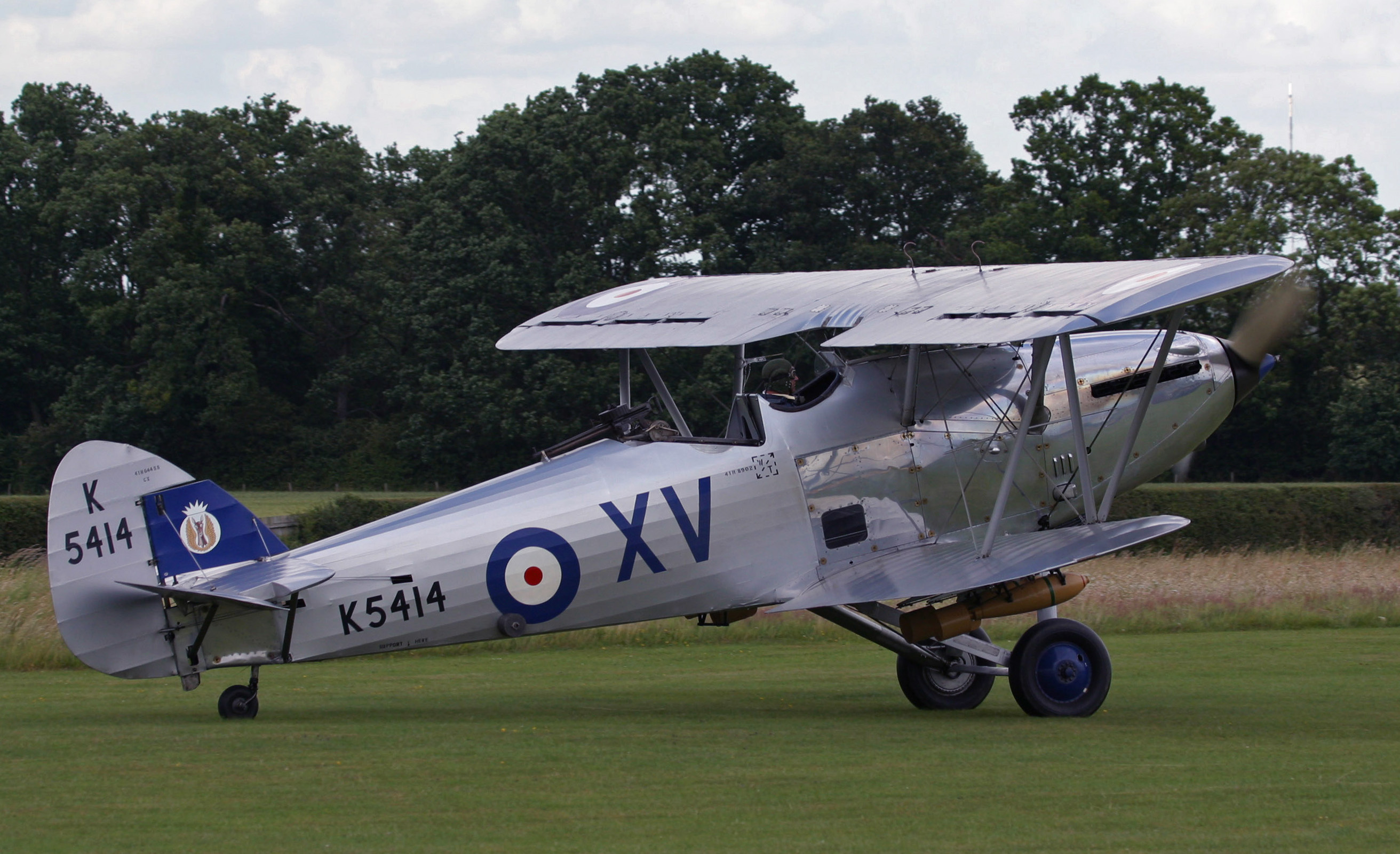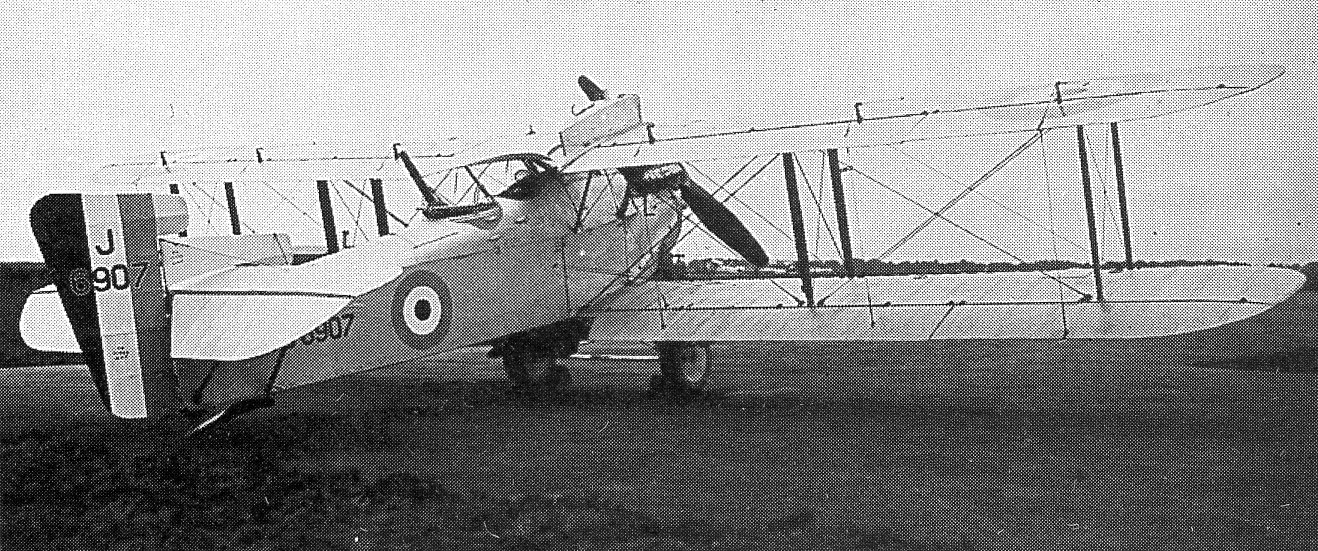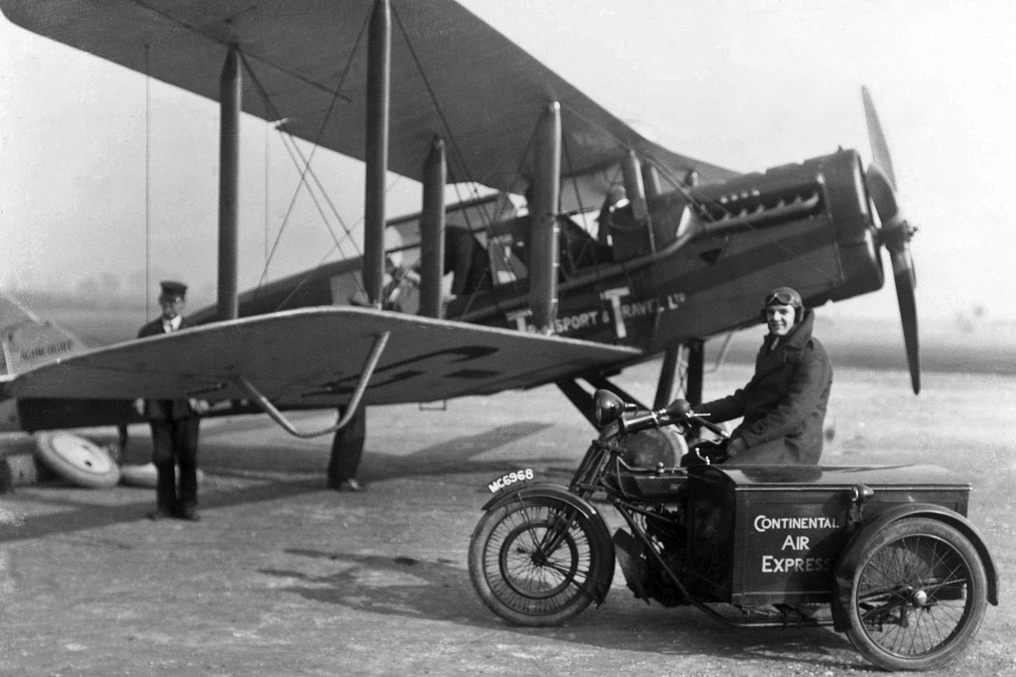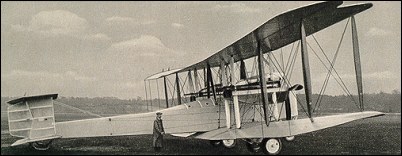|
RAF Bircham Newton
Royal Air Force Bircham Newton or more simply RAF Bircham Newton is a former Royal Air Force station located south east of Docking, Norfolk and north east of King's Lynn, Norfolk, England. History The site was first used during the First World War and received the largest British bomber of the time, the Handley Page V/1500. They would have carried out bombing missions against Berlin but the Armistice was arranged before any missions were actually flown. There were several communication squadrons active at the airfield during 1919. The airfield was equipped with one aircraft repair shed and three double bay general service sheds, although these had been demolished by 1937. It had two Belfast hangars, three C Type hangars, three Bellman hangars and ten Blister hangars. It operated through the Second World War as part of No. 16 Group RAF as part of RAF Coastal Command. No. 206 Squadron RAF was one of the squadrons being based there, on maritime patrol duties. Two satellite ... [...More Info...] [...Related Items...] OR: [Wikipedia] [Google] [Baidu] |
Ensign Of The Royal Air Force
An ensign is the national flag flown on a vessel to indicate nationality. The ensign is the largest flag, generally flown at the stern (rear) of the ship while in port. The naval ensign (also known as war ensign), used on warships, may be different from the civil ensign (merchant ships) or the yacht ensign (recreational boats). Large versions of naval ensigns called battle ensigns are used when a warship goes into battle. The ensign differs from the jack (flag), jack, which is flown from a jackstaff at the bow of a vessel. In its widest sense, an ensign is just a flag or other standard. The European military rank of Ensign (rank), ensign, once responsible for bearing a unit's standard (whether national or regimental), derives from it (in the cavalry, the equivalent rank was Cornet (rank), cornet, named after a type of flag). Ensigns, such as the ancient Roman ensigns in the Arch of Constantine, are not always flags. National ensigns In nautical use, the ensign is flown on a shi ... [...More Info...] [...Related Items...] OR: [Wikipedia] [Google] [Baidu] |
Fairey Gordon
The Fairey Gordon was a British light bomber (2-seat day bomber) and utility aircraft of the 1930s. The Gordon was a conventional two-bay fabric-covered metal biplane. It was powered by variants of the Armstrong Siddeley Panther IIa engine. Armament was one fixed, forward-firing Vickers machine gun and a Lewis Gun in the rear cockpit, plus of bombs. The aircraft was somewhat basic; instruments were airspeed indicator, altimeter, oil pressure gauge, tachometer, turn and bank indicator and compass. Development The Gordon was developed from the IIIF, primarily by use of the new Armstrong Siddeley Panther engine. The prototype was first flown on 3 March 1931, and around 80 earlier IIIFs were converted to a similar standard, 178 new-built aircraft were made for the RAF, a handful of IIIFs being converted on the production line. 154 Mark Is were produced, before production switched to the Mark II with larger fin and rudder; only 24 of these were completed before production swi ... [...More Info...] [...Related Items...] OR: [Wikipedia] [Google] [Baidu] |
Fairey IIIF
The Fairey Aviation Company Fairey III was a family of British reconnaissance biplanes that enjoyed a very long production and service history in both landplane and seaplane variants. First flying on 14 September 1917, examples were still in use during the Second World War. Design and development The prototype of the Fairey III was the N.10 floatplane, which was designed and built in 1917 by Fairey Aviation (along with the smaller N.9) to meet Admiralty Specification N.2(a) for a carrier-based seaplane for the Royal Naval Air Service during the First World War. N.10, also known by its constructor's number F.128 was a two-bay biplane with folding wings and powered by a 260 hp (190 kW) Sunbeam Maori engine. It first flew from the Port Victoria seaplane station on the Isle of Grain, Kent on 14 September 1917.Taylor 1988, p.71. Following tests both as a floatplane and with a conventional wheeled undercarriage, production orders were placed for two versions both powered b ... [...More Info...] [...Related Items...] OR: [Wikipedia] [Google] [Baidu] |
Hawker Hind
The Hawker Hind was a British light bomber of the inter-war years produced by Hawker Aircraft for the Royal Air Force. It was developed from the Hawker Hart day bomber introduced in 1931. Design and development An improved Hawker Hart bomber defined by Specification G.7/34, was purchased by the RAF as an interim aircraft, while more modern monoplane bombers such as the Fairey Battle were still in development. Structural elements were a mixture of steel and duralumin with the wings being fabric covered; the main differences compared to the earlier Hart was a new powerplant, (the Rolls-Royce Kestrel V) and the inclusion of refinements from the earlier derivatives such as the cut-down rear cockpit developed for the Demon. The prototype (Serial number ''K2915'') was constructed very rapidly due to Hawker's development work for other proposals and made its first flight on 12 September 1934. A variety of changes were subsequently incorporated ("ram's horn" exhaust manifolds, Fairey-R ... [...More Info...] [...Related Items...] OR: [Wikipedia] [Google] [Baidu] |
Hawker Hart
The Hawker Hart is a British two-seater biplane light bomber aircraft that saw service with the Royal Air Force (RAF). It was designed during the 1920s by Sydney Camm and manufactured by Hawker Aircraft. The Hart was a prominent British aircraft in the inter-war period, but was obsolete and already side-lined for newer monoplane aircraft designs by the start of the Second World War, playing only minor roles in the conflict before being retired. Several major variants of the Hart were developed, including a navalised version for the Royal Navy's aircraft carriers. Beyond Britain, the Hart would be operated by a number of foreign nations, including Sweden, Yugoslavia, Estonia, South Africa, and Canada. Design and development In 1926, the Air Ministry stated a List of Air Ministry Specifications#1920-1929, requirement for a two-seat high-performance light day-bomber, to be of all-metal construction and with a maximum speed of 160 mph (258 km/h). Designs were tendered by ... [...More Info...] [...Related Items...] OR: [Wikipedia] [Google] [Baidu] |
Fairey Fawn
The Fairey Fawn was a British single-engine light bomber of the 1920s. It was designed as a replacement for the Airco DH.9A and served with the Royal Air Force between 1924 and 1929. Development The Fairey Fawn was designed by F Duncanson of Fairey Aviation as a replacement for the Airco DH.9A in the light day-bomber role, to meet the requirements of Specification 5/21 for an aircraft for reconnaissance and army cooperation duties. It was a development of the Fairey Pintail floatplane, powered by a Napier Lion engine. The first of three prototypes flew on 8 March 1923.Mason 1994, p. 148. The second and third prototypes were fitted with lengthened fuselages to improve stability, and this was adapted for the production version.Taylor 1988, pp. 108–109. The Fawn was fitted with fuel tanks above the top wing in order to meet Air Ministry safety requirements. These tanks posed a hazard to the pilots if the aircraft overturned on landing. A revised specification 20/23 was ... [...More Info...] [...Related Items...] OR: [Wikipedia] [Google] [Baidu] |
Airco DH
The Aircraft Manufacturing Company Limited (Airco) was an early United Kingdom, British aircraft manufacturer. Established during 1912, it grew rapidly during the First World War, referring to itself as the largest aircraft company in the world by 1918. Airco produced many thousands of aircraft for both the British and Allied military air wings throughout the war, including fighter aircraft, fighters, trainer aircraft, trainers and medium bomber, bombers. The majority of the company's aircraft were designed in-house by Airco's chief designer Geoffrey de Havilland. Airco established the first airline in the United Kingdom, Aircraft Transport and Travel Limited, which operated as a subsidiary of Airco. On 25 August 1919, it commenced the world's first regular daily international service. Following the end of the war, the company's fortunes rapidly turned sour. The interwar period was unfavourable for aircraft manufacturers largely due to a glut of surplus aircraft from the war ... [...More Info...] [...Related Items...] OR: [Wikipedia] [Google] [Baidu] |
Vickers Virginia
The Vickers Virginia was a biplane heavy bomber of the British Royal Air Force, developed from the Vickers Vimy. Design and development Work on the Virginia was started in 1920, as a replacement for the Vimy. Two prototypes were ordered on 13 January 1921 and another two prototypes were ordered in September 1922.Jarrett ''Aeroplane Monthly'' May 1993, p. 25. The Virginia was similar to the Vimy but notably had a lowered front gunner's pulpit to allow the pilot a greater field of view, 20 ft (6 m) greater wingspan and a 9 ft (3 m) longer fuselage. The aircraft was powered by twin Napier Lion engines and flew for the first time on 24 November 1922.Andrews and Morgan 1989, p. 131. At the Aircraft Experimental Establishment at RAF Martlesham Heath, the Virginia prototype underwent type trials. One of the first modifications was to replace the original two-bladed propellers with four-bladed propellers. An unusual set of "fighting top" turrets were added to the ... [...More Info...] [...Related Items...] OR: [Wikipedia] [Google] [Baidu] |
Vickers Vimy
The Vickers Vimy was a British heavy bomber aircraft developed and manufactured by Vickers Limited. Developed during the latter stages of the First World War to equip the Royal Flying Corps (RFC), the Vimy was designed by Reginald Kirshaw "Rex" Pierson, Vickers' chief designer. Only a handful of Vickers Vimy aircraft had entered service by the time the Armistice of 11 November 1918 came into effect, so the type did not serve in active combat operations during the war, but the Vimy became the core of the Royal Air Force (RAF)'s heavy bomber force throughout the 1920s. The Vimy achieved success as both a military and a civil aircraft, the latter using the ''Vimy Commercial'' variant. A dedicated transport derivative of the Vimy, the Vickers Vernon, became the first troop-transport aircraft operated by the RAF. During the interwar period the Vimy set several records for long-distance flights, the most celebrated and significant of these being the first non-stop crossing of the Atl ... [...More Info...] [...Related Items...] OR: [Wikipedia] [Google] [Baidu] |
Hawker Siddeley Kestrel
The Hawker P.1127 and the Hawker Siddeley Kestrel FGA.1 are the British experimental and development aircraft that led to the Hawker Siddeley Harrier, the first ''vertical and/or short take-off and landing'' (V/STOL) jet fighter-bomber. Development began in 1957, taking advantage of the Bristol Engine Company's choice to invest in the creation of the Pegasus vectored-thrust engine. Testing began in July 1960 and by the end of the year the aircraft had achieved both vertical take-off and horizontal flight. The test program also explored the possibility of use upon aircraft carriers, landing on in 1963. The first three aircraft crashed during testing, one at the 1963 Paris Air Show. Improvements to future development aircraft, such as swept wings and more powerful Pegasus engines, led to the development of the Kestrel. The Kestrel was evaluated by the Tri-partite Evaluation Squadron, made up of military pilots from the United Kingdom, the United States, and West Germany. Later ... [...More Info...] [...Related Items...] OR: [Wikipedia] [Google] [Baidu] |
RAF Langham
Royal Air Force Langham or more simply RAF Langham is a former Royal Air Force station, located at Langham, northwest of Norwich in the English county of Norfolk. It operated between 1940 and 1961. The airfield was the most northerly of the wartime RAF airfields in Norfolk and its position, just from the North Sea at Blakeney, made it a suitable site for RAF Coastal Command aircraft. The airfield was built during the first few months of the Second World War as a dispersal and satellite station to RAF Bircham Newton. It became operational in the summer of 1940. History The airfield was originally laid out with three grass runways. The station became fully self-supporting in 1942, when it was upgraded with three concrete runways (tar-covered), three T2 type and four Blister hangars, an encircling perimeter track and 36 spectacle-shape hardstandings, plus a Type 12779/41 control tower and normal Mk 2 approach lighting for night operations. Primarily used by RAF Coastal Comma ... [...More Info...] [...Related Items...] OR: [Wikipedia] [Google] [Baidu] |








.jpg)